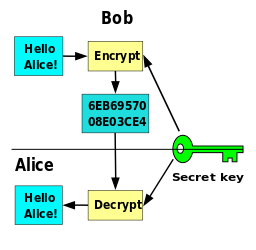Will you have also a free public channel or will you have a “closed shop” content system?
regards from berlin
gerhard
Will you have also a free public channel or will you have a “closed shop” content system?
regards from berlin
gerhard
Almost all of the content on our broadcasts have always been free to receive.
I remember we were able to send our own few paragraphs or pictures into the carousel to be sent up and back down. Will we still be able to do this with the new system?
There was very little activity on the community file-uploads, so I’m not sure we will bring that back. There will, however, be a community messaging system, similar to APRS.
There was a lot of activity i remember, but because of the limited bits n bytes there wasnt much to upload…
so… this is a fallback, really sad… This will dramatically reduce some interest.
I think if the filesize was more meaninful it would have got used.
I forget exactly how big it was, but too small to upload a useful image.
Will you still sift APRS messages for “OUTNET” and send those?
–Konrad, WA4OSH
@Seasalt @adam9a4qv @Martin @ac8dg @philm @bdheaton @Gary_Smith It would be nice to have an inexpensive open e-mail service alternative/compliment to Sailmail or WinLink
I would be willing to pay a yearly membership contribution for something like this.
–Konrad Roeder, WA4OSH
By open email, do you mean that the whole world can read messages that are sent to you?
First of all, with symmetric encryption, the message is encrypted and decrypted with the same secret key. This poses two problems: 1) Distribution of the secret key and 2) Secure storage of the secret key.
Asymmetric encryption is different from symmetric encryption since one key is used to encrypt the message and another key is used to decrypt the message. It solves problem #2, bur still has problem #1. One example of asymmetric encryption is public key encryption. The public key is used to encrypt the message and the private key is used to decrypt the message. The receiver would have to generate a private and public key. Then in order to receive data, they would have to have a way of publishing the public key. Maybe the public key could be copied onto a memory stick and mailed to the key server. Maybe the public key can be published at an Internet site, etc. Either way, it’s not nearly as smooth as could be.
–Konrad Roeder, WA4OSH
Here are some graphics to go along with the above discussion.
Symmetric Key Encyrption:

Asymmetric Key Encryption:

As you can see, with Asymmetric Key Encryption, Alice still needs to give Bob her public key.
–Konrad, WA4OSH
I know you are busy getting DreamCatcher 3.01’s out, but I did need to follow-on with a couple of related issues that you may already be aware of: EAR - encryption for data privacy and ITAR regarding the issue of encrypting data traffic (including e-mails and the technology to decrypt what’s being sent)
–Konrad, WA4OSH
I use a Firefox and Thunderbird Add-on called Crypto Data CryptoData – Get this Extension for 🦊 Firefox (en-US) to encrypt some of my messages.
Programs like this have some draw backs in regard to their “unbreakability”, but do not require any key distribution. To use effectively, one must select a unique key and get that key to the recipient of the message to use in decrypting the message. My friends and I meet over a cup of coffee to exchange keys. Ken
So Crypto Data is symmetric encryption. And “Key Distribution” is you delivering the key through your coffee klatsch. It’s hard for someone in a foreign country to visit with Syed and just get a key from him and transfer it securely. There may be countries where Crypto Data cannot be legally exported to. The same goes for keys. See note regarding EAR and ITAR.
We certainly can use something like PGP here in the US and have users publish their public keys on a public key server. But this won’t work if you don’t have access to the Internet, or PGP, etc.
–Konrad, WA4OSH
Of course there’s key distribution. Here are four ways keys can be distributed:
"KEY DISTRIBUTION FOR SYMMETRIC KEY CRYPTOGRAPHY
The major problem in symmetric key cryptography is that of the key distribution because the key must be shared secretly [2]. Keys can be distributed by any one of the following ways:
Reference:
Key Distribution for Symmetric Key Cryptography: A Review
–Konrad, WA4OSH
Yes that is all true - - but if you want total protection, key distribution is not the way to go. National security organizations (such as NSA here in the US), have back doors into encryption devices and programs.
There is nothing like the one-time-pad approach or a software program that emulates it. Ken
You still need a key to encrypt and decrypt a one-time pad message.
–Konrad, WA4OSH